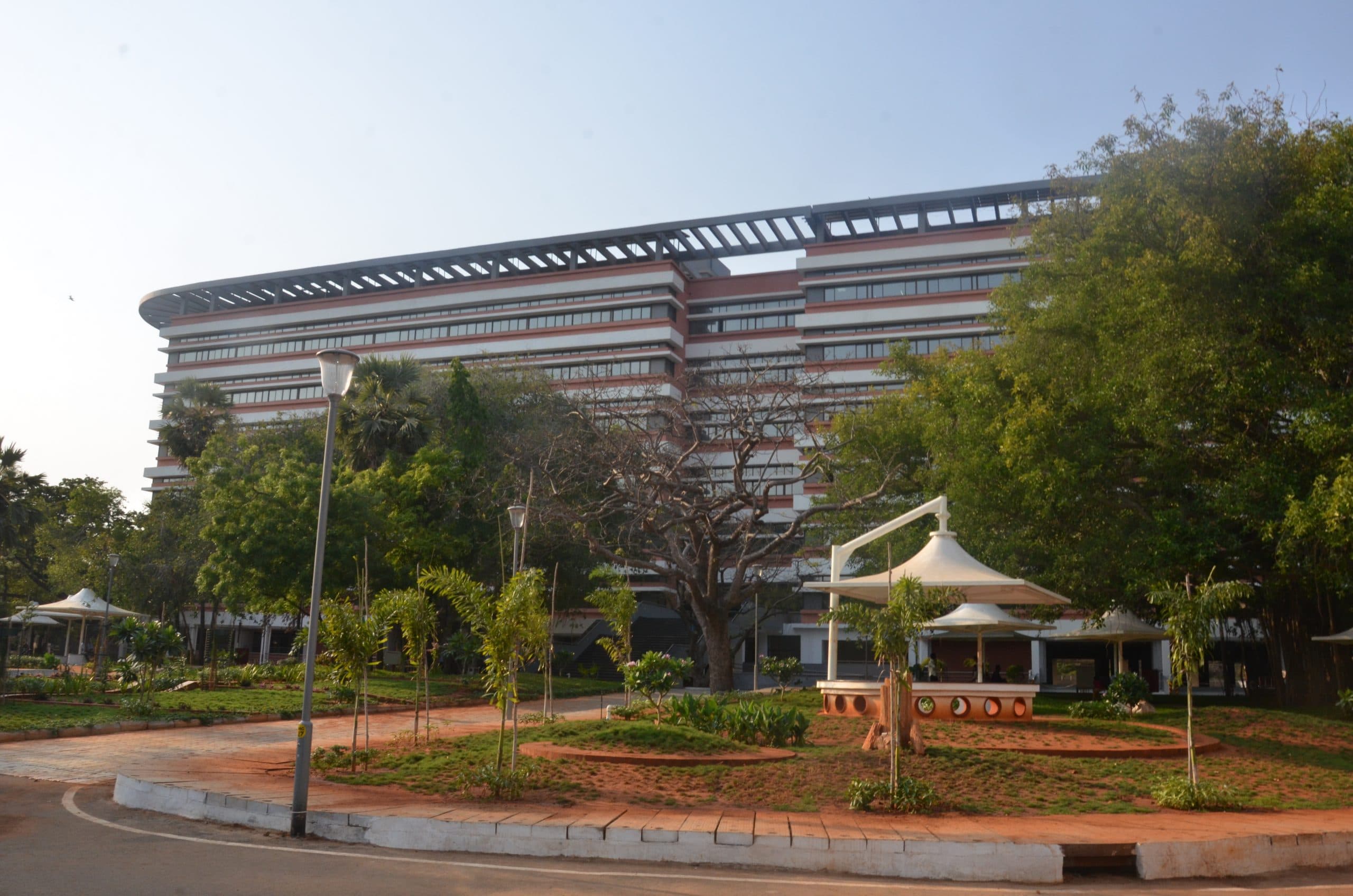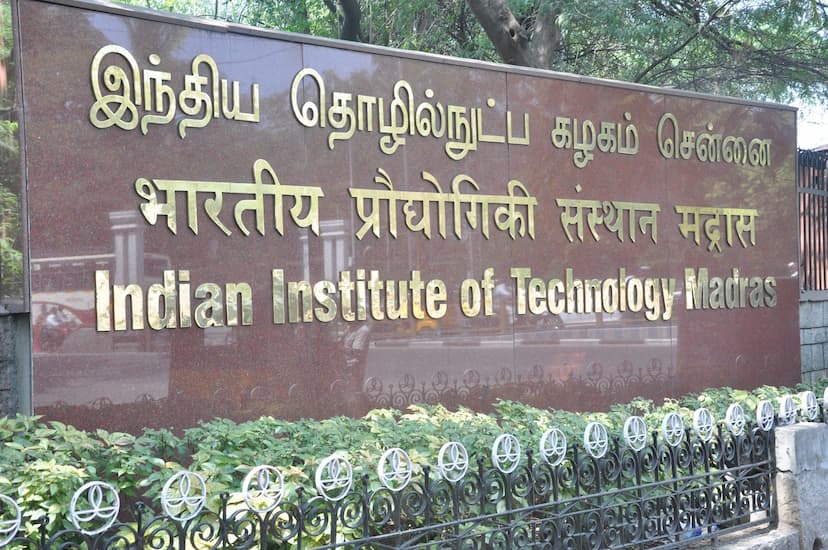IIT Madras 2020: Great use of metamaterials for better detection of defects

IIT Madras and University of Nairobi researchers have used metamaterials to improve detection of defects in large structures like buildings and pipelines with help of guided wave ultrasound.
The results of the work done by IIT Madras and University of Nairobi has recently been published in the international reputed peer-reviewed journal AIP Advances.


Many large engineering structures require periodic testing to prevent catastrophic failures that can occur due to corrosion and strain.
High-frequency sound waves that travel in the bulk (bulk ultrasound) are widely used for non-invasive and non-destructive testing of structural materials.
But the traditional bulk ultrasonic inspection is tedious and time-consuming, as it involves point-by-point assessment of structures and this is especially challenging in large-scale assets.

Apply Now – Bharath University – Bharath Institute of Higher Education and Research – [BIHER], Chennai
Although ultrasound guided by features such as plates, bars, wires, pipes etc. is an attractive alternative, such ‘guided ultrasound’ is limited by resolution due to the relatively lower frequencies used.
Professor Prabhu Rajagopal of IIT Madras said the use of ultrasound scans in medical diagnostics is well-known and the principle remains the same for structural monitoring.

Prabhu further said in conventional bulk ultrasound-based testing, the sound waves are sent into the sample, say pipe or pillar, perpendicular to the item, and a detector calculates the time interval between the transmission and reception of the sound waves that are either transmitted or reflected.
Sound waves travel at a uniform speed if the object is defect-free, but defects impede or deflect sound waves, which results in delays in reception.
Conventional ultrasound-based testing must be made at multiple regions of the test material and is therefore cumbersome to be used with large objects such as train tracks, oil-pipelines and reinforcing structures of tall buildings, among others
This is where Guided Wave Testing (GWT) helps. In GWT, the sound waves are sent along the length of the structure rather than into the structure.

This allows the waves to travel long distances. GWT has poorer resolution than conventional ultrasound-based testing due to diffraction limitations.

Professor Prabhu Rajagopal of IIT Madras and his research team put to use metamaterials to improve the resolution of guided ultrasound waves.
Metamaterials are artificially crafted materials with unique internal microstructures that give them properties not found in nature, explains Dr. Rajagopal.
The constituent artificial units of the metamaterial can be tailored in shape, size, and interatomic interaction, to exhibit unusual properties, he said.
Acoustic metamaterials are useful in manipulating sound waves. The Researchers used a metamaterial structure consisting of a series of periodically arranged channels.
With proper selection of channel size, length, and periodicity of the metamateiral, the evanescent waves arising from scattering by a defect can be magnified by a process called Fabry–Pérot resonance.
Resonance is a phenomenon in which a wave, in this case, the ultrasound wave, is amplified due to a match in frequency between the wave and the frequency generated by the metamaterial.
Sharing his experience on the project, John Birir said his work in the oil and gas industry in Kenya as a certified NDT inspector gave me a first-hand experience on the limitations of some of the inspection methods in the market.
Working with my guides Professor Prabhu Rajagopal and Professor Michael Gatari, we came up with ideas of how we can eliminate some of the limitations.
John Birir said the MoU between UoN and IIT Madras gave him access to state-of-the-art research equipment that enabled us to design experiments to implement one of the ideas we had on super-resolution imaging.
Working with the research team at CNDE (Center for Non-Destructive Evaluation) at IIT Madras with their diverse experiences and skill sets (not to mention the many sleepless nights spent at the lab) we finally designed and developed a metamaterial that brings resolution of guided waves to a whole new level.
I am very grateful for this international collaboration that has brought us to where we are today, he said.

Its success in two and a half years is worth recognition, widely, as an admirable example of what commitment can achieve in terms of not only technology transfer but support of the needy institutions in research capacity building and facilitation of research infrastructure, he said.
The researchers used an aluminium bar with side-drilled holes as the test sample. The holes were the defects that had to be detected. The specially fabricated metamaterial was placed just above the holes.
The transmitter was placed at the end farthest from the holes, and the receiver, close to the holes. The metamaterial resulted in detection of the holes with improved resolution down to 1/72 of the operating wavelength, which is the highest reported worldwide, for the ultrasonic domain.
This level of resolution makes GWT comparable to bulk ultrasonic testing with the added advantage of longer range.
Moreover, with skilful use of frequency, this approach also offers the tantalizing prospect of a guided ultrasonic microscope with radical benefits for remote diagnostics.
About IIT Madras
IIT Madras was established in 1959 by the Government of India as an ‘Institute of National Importance.’ The activities of the Institute in various fields of Science and Technology are carried out in 16 academic departments and several advanced interdisciplinary research academic centres.
The Institute offers undergraduate and postgraduate programmes leading to B.Tech., M.Sc., M.B.A., M.Tech., M.S., and Ph.D., degrees in a variety of specialisations. IIT Madras is a residential institute with more than 580 faculty and 9,500 students. Students from 18 countries are enrolled here.
IIT Madras fosters an active entrepreneurial culture with strong curricular support and through the IITM Incubation Cell.
IIT Madras has been ranked No.1 in the ‘Overall’ Category for the second consecutive year in India Ranking 2020 released by National Institutional Ranking Framework, Ministry of Human Resources Development, Govt. of India.
The Institute has also been ranked No.1 in the Engineering Institutions category in the same rankings for five consecutive years – 2016, 2017, 2018, 2019 and 2020. It was also adjudged as the ‘Top innovative Institution’ in the country in the Atal Ranking of Institutions on Innovation Achievements (ARIIA) 2019 launched by Innovation Cell of MHRD.
S Vishnu Sharmaa now works with collegechalo.com in the news team. His work involves writing articles related to the education sector in India with a keen focus on higher education issues. Journalism has always been a passion for him. He has more than 10 years of enriching experience with various media organizations like Eenadu, Webdunia, News Today, Infodea. He also has a strong interest in writing about defence and railway related issues.









